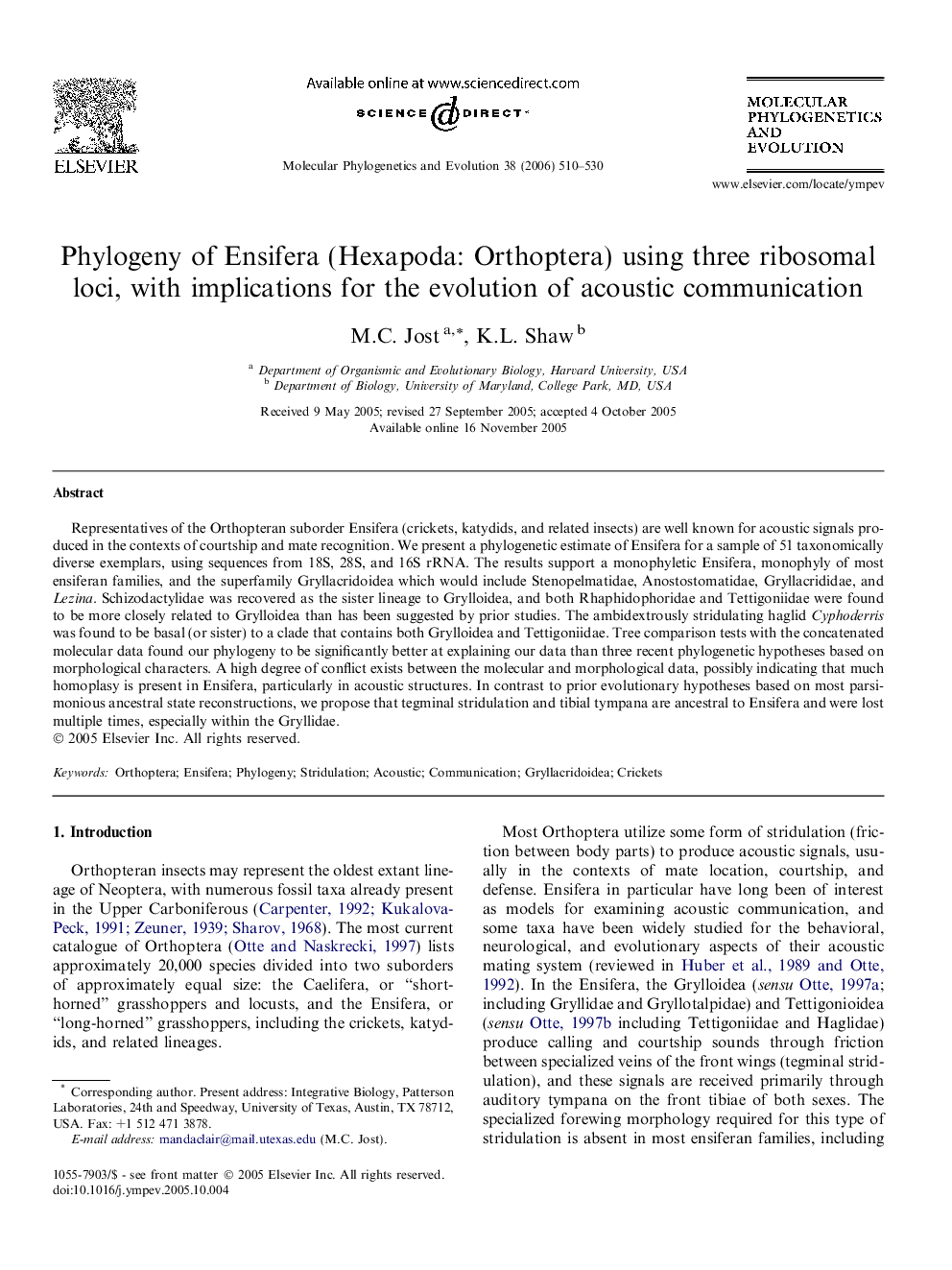| Article ID | Journal | Published Year | Pages | File Type |
|---|---|---|---|---|
| 2836072 | Molecular Phylogenetics and Evolution | 2006 | 21 Pages |
Representatives of the Orthopteran suborder Ensifera (crickets, katydids, and related insects) are well known for acoustic signals produced in the contexts of courtship and mate recognition. We present a phylogenetic estimate of Ensifera for a sample of 51 taxonomically diverse exemplars, using sequences from 18S, 28S, and 16S rRNA. The results support a monophyletic Ensifera, monophyly of most ensiferan families, and the superfamily Gryllacridoidea which would include Stenopelmatidae, Anostostomatidae, Gryllacrididae, and Lezina. Schizodactylidae was recovered as the sister lineage to Grylloidea, and both Rhaphidophoridae and Tettigoniidae were found to be more closely related to Grylloidea than has been suggested by prior studies. The ambidextrously stridulating haglid Cyphoderris was found to be basal (or sister) to a clade that contains both Grylloidea and Tettigoniidae. Tree comparison tests with the concatenated molecular data found our phylogeny to be significantly better at explaining our data than three recent phylogenetic hypotheses based on morphological characters. A high degree of conflict exists between the molecular and morphological data, possibly indicating that much homoplasy is present in Ensifera, particularly in acoustic structures. In contrast to prior evolutionary hypotheses based on most parsimonious ancestral state reconstructions, we propose that tegminal stridulation and tibial tympana are ancestral to Ensifera and were lost multiple times, especially within the Gryllidae.
